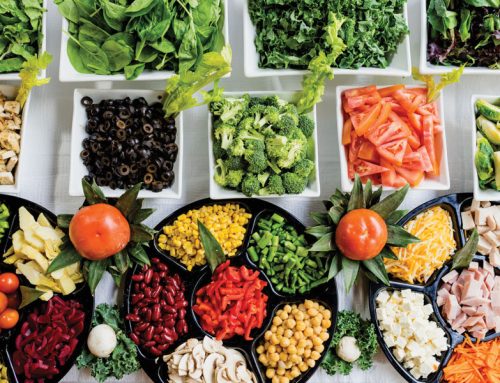The dirty dozen and the clean 15 refer to the fruits and vegetables that are the most and least contaminated by pesticide use, according to the Environmental Working Group. Based on pesticide-tesing data generated by scientists at the U.S. Department of Agriculture and the federal Food and Drug Administration, the EWG develops their guide to help consumers reduce their exposure to pesticides. So you may ask yourself, should I avoid these items? Absolutely not! Fresh fruits and vegetables are always a healthier choice than processed foods.
We all know that organic foods can hit your pocket book hard but this guide will give you an idea of where you should start when you are considering purchasing organic fair. This list also highlights two crops, kale and collard greens.
They don’t necessarily meet the not meet traditional Dirty Dozen criteria but were commonly contaminated with highly toxic organophosphate insecticides.
These insecticides are toxic to the nervous system and have been largely removed from agriculture over the past decade. But they are not banned and still show up on some food crops.
Here are EWG’s updated lists for 2013: (listed from most to least contaminated)
Dirty Dozen:
1. apples
2. celery
3. cherry tomatoes
4. cucumber
5. grapes
6. hot peppers
7. nectarines (imported)
8. peaches
9. potatoes
10. spinach
11. strawberries
12. sweet bell peppers
plus collards & kale
plus summer squash & zucchini
Clean 15:
1. Asparagus
2. Avocados
3. Cabbage
4. Cantaloupe
5. Corn
6. Eggplant
7. Grapefruit
8. Kiwi
9. Mangoes
10. Mushrooms
11. Onions
12. Papayas
13. Pineapples
14. Sweet Peas – frozen
15. Sweet Potatoes
Organic vs. Conventional Milk
In Canada, all organic products, including milk, are certified by the government’s Canada Organic Regime. It is certified organic if it follows those farming practices. Some of these include milk from essentially “free-range” cows as often as possible (some up to 22 hours a day), providing them with organic feed that does not consist of any harmful pesticides, chemicals, fertilizers, or genetically modified ingredients, and removing any cow treated by antibiotics from the herd for an extended period.
Conventional dairy farms, which are also regulated by the Canadian Food Inspection Agency, may follow some or many of the same practices. Canada, unlike the US and other countries, strictly prohibits the use of BVH (bovine growth hormones—used to increase production of milk) for ALL dairies, whether organic or conventional. So the good news here is that concerns about any growth hormones and their effects on young children do not apply to any Canadian milk, conventional or organic.
So you may ask what is the fuss all about then? Concerns over antibiotics in milk is another reason why some are drawn to buy organic. Like their human counterparts, dairy cows are susceptible to infections, most commonly mastitis. Organic farms do use antibiotics as a last resort, opting for homeopathic remedies first, but if antibiotics must be used to maintain quality of life for the cow, they will be. If the animal is put back into the herd, its milk will not be used for sale for a minimum of 14 to 30 days or longer after the final treatment (on some organic farms, it will never be used for milk production again).
In conventional dairies, the cow is removed from milk production generally for two to five days after the final treatment of medication. With both organic and non-organic dairy farms, if any trace of antibiotics is found in the milk during the quality test at the time of tank pick up, the farmer is responsible for buying the contaminated tank back. So it’s not in any farmer’s interest to sell milk containing antibiotics.
photos courtesy of freedigitalphotos.net







